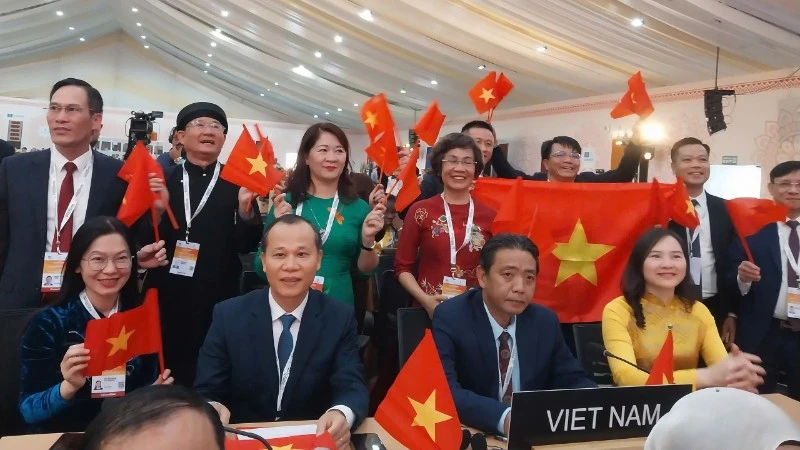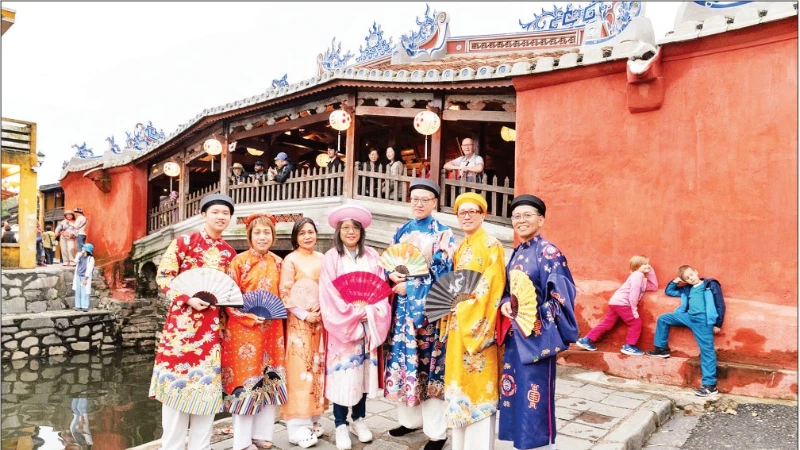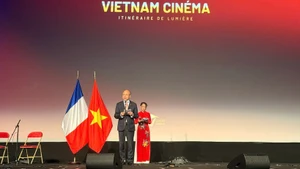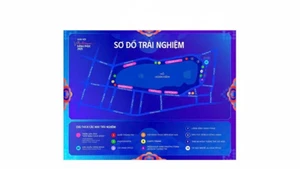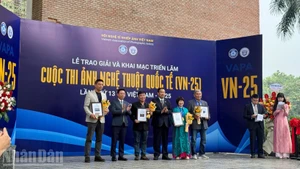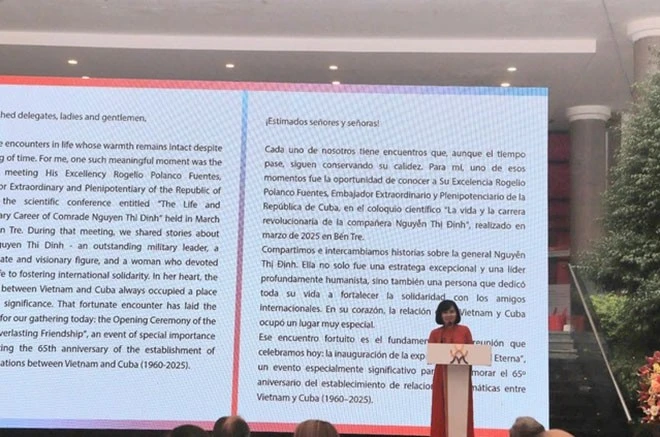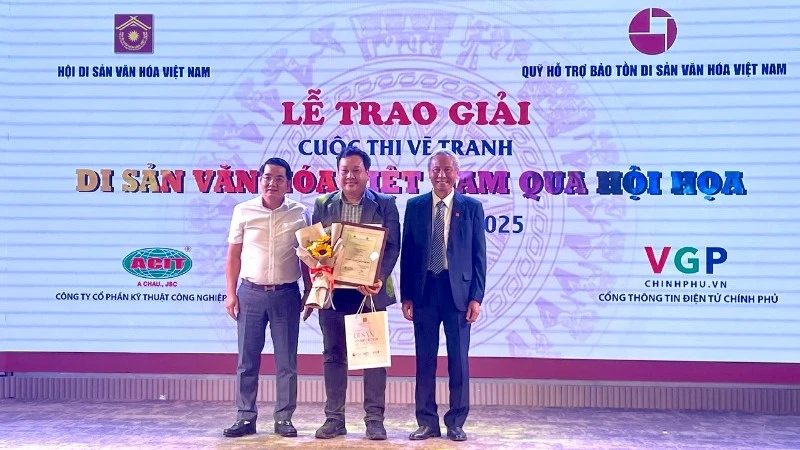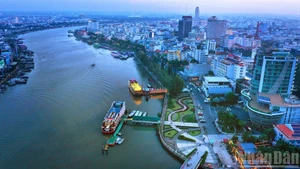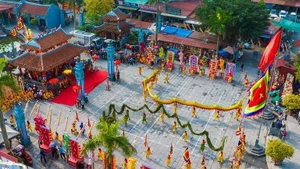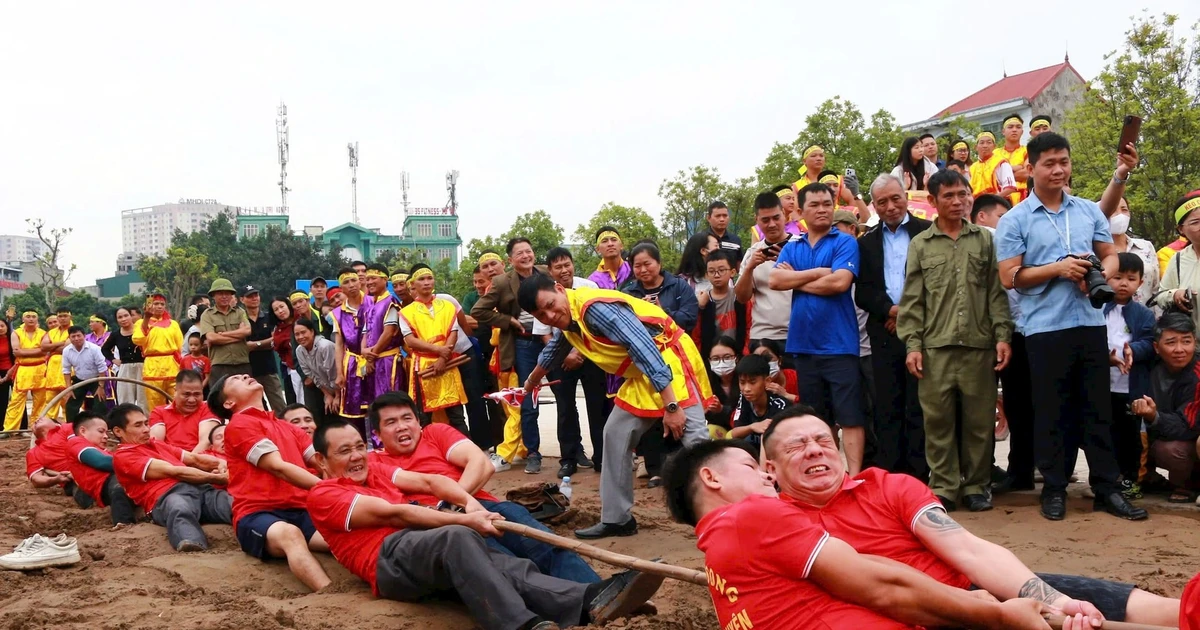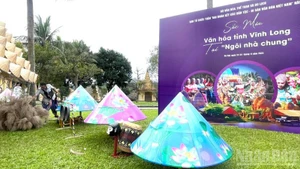At present, all areas of cultural life are moving in a positive direction thanks to the application of modern technologies. We have essentially built a digital database of cultural heritage, which forms the foundation for evaluating, managing, researching, preserving, promoting, and publicising culture.
Widespread dissemination
With rapid technological development, people today can easily access information, learn, explore, and create culture. New technologies such as artificial intelligence (AI), 3D scanning, augmented reality (AR), virtual reality (VR), extended reality (XR), blockchain, near-field communication (NFC), big data, and more have been strongly applied in the cultural sphere.
For example, archaeologists recently used 3D imaging technology to store and recreate artefacts at the Vuon Chuoi archaeological site in Ha Noi. In the three-dimensional space of the excavation pit, supported by technology, authentic data was collected to the fullest extent for research purposes. This technological support has helped clarify expert assessments regarding the prehistoric period of the Vietnamese people some 3,500 to 4,000 years ago.
The project for Digital Identification and Exhibition of Nguyen Dynasty artefacts, implemented at the Museum of Royal Antiquities in Hue, uses blockchain and NFC technologies to manage and identify the artefacts. Visitors to the museum can use their smartphones to scan chips attached to the artefacts and instantly access information on their origin and significance via the website museehue.vn. A representative from the Museum of Royal Antiquities in Hue stated that thousands of visitors access the virtual space daily, with technology helping to spread the museum’s images, data, and knowledge to a wide audience.
At the Temple of Literature in Ha Noi, the project “Applying Digital Physics Technology to Enhance Heritage Value” has been implemented with many practical activities. The project involves a collective effort from various experts to recover traditional cultural values at risk of being lost, applying the Nomion digital identification technology (a combination of NFC chip and blockchain) to create a unique digital identity for each physical object, with the aim of preserving and bringing cultural values into everyday life.
In reality today, almost all sectors and areas of culture such as performing arts, heritage, tourism, photography and exhibitions, music, and advertising have synchronised with the digital transformation process.
The campaign launching the project which helped create the first digital-physical book in Viet Nam. As a result, the image of the Nghe – a purely Vietnamese mythical creature at the Temple of Literature – has been widely disseminated to the public and international visitors, contributing to the promotion of Vietnamese culture. To enjoy this unique book, visitors can use a smartphone to interact with an RFID chip embedded in a brass Nghe statue at the Temple of Literature.
In reality today, nearly all sectors and fields of culture such as performing arts, heritage, tourism, photography and exhibitions, music, and advertising have caught up with the digital transformation, with appropriate investment being prioritised in the application of technology as an inevitable trend. Thanks to technology, many cultural products and values have reached international friends, showcasing a culturally rich and modern Viet Nam on its path of global integration.
Solid foundation for preservation and development
In the context of nationwide digital transformation, culture – as the spiritual foundation of society, a goal, an internal strength, and a key driver for national development – needs to be prioritised so that it is not left behind, but rather, takes the lead like a guiding light. In today's world, culture, economy, and politics are intertwined, and culture holds an important position in the competition for comprehensive national power. Cultural industries are a distinct field that brings both economic benefits and social and humanistic values.
The experience of many developed countries shows that the cultural industry leads economic development. To develop cultural industries, applying technology to turn cultural values into consumer products that generate economic benefits for localities and the nation is a necessary requirement. It is the strong development of technology that has enabled the formation of cultural industries, the expansion of service markets, and the dissemination of cultural power to all social strata and beyond national borders, thereby promoting international cooperation and exchange and building national soft power.
Technology brings many opportunities and offers various solutions for preserving, promoting, and spreading culture.
Technology provides many opportunities and solutions for the preservation, promotion, and dissemination of culture. If we know how to harness the power of technology to explore and publicise cultural values, we can generate interest from the international community through tourist destinations, cultural heritage, cuisine, and traditional art forms that bear the distinct identity of Viet Nam.
Surveys have shown that at many cultural heritage sites, tourist destinations, and museums, the application of digital technologies generates significant revenue from entrance fees and the production and distribution of certified replicas of heritage artefacts. Huy Nguyen, General Director of Phygital Lab – a unit that has provided digital solutions for many cultural institutions – stated that with the current strong application of digital technologies in culture, we may soon witness the trading of digital versions of heritage artefacts on digital or phygital marketplaces.
Critic and cultural theorist Ngo Thao believes that one of the most important meanings of applying science and technology to culture is its ability to meet people's cultural enjoyment needs, providing equal opportunities for people across all regions to access, explore, and create culture. Thanks to technology, whether in mountainous or lowland areas, in cities or rural areas, people can access applications via smart devices to seek cultural knowledge, conduct research, learn, and interactively choose destinations.
From the perspective of international exchange, technology with its superior features can introduce and promote Vietnamese cultural values to the world. From there, Viet Nam’s unique cultural values can easily reach international audiences, attracting tourism and helping Viet Nam become a preferred cultural destination. In this regard, technology has helped elevate the value of Vietnamese culture on the international stage, because cultural diplomacy is at the heart of expanding cooperation and deep integration into the global community.
Vietnamese cultural products that embody national identity reaching international markets not only strengthen national soft power but also promote trade, reinforce friendly relations, and subtly and profoundly safeguard national security. With technology as a powerful modern tool, the cultural values accumulated over thousands of years of Vietnamese history now have the opportunity to soar.
The National Target Programme for Cultural Development for the 2025–2035 period, approved by the National Assembly on November 27, 2024, sets a target for cultural industries to achieve an average annual growth rate of 7% and to contribute 8% of national GDP.
One of the proposed solutions for achieving these goals is to strengthen the application of technology to digitise cultural values, turning culture into a vibrant stream of concrete products, expanding both domestic and international markets, promoting culture while generating economic benefits for the country.
To achieve this, the first step is to develop digital infrastructure to support creative industries, such as high-speed internet, online platforms, and modern technology applications. In terms of human resources, it is essential to promote specialised training for artists, artisans, and creators so that they can proficiently use technology in their activities, bringing new dimensions of beauty to cultural products.
Cultural managers and staff must shift their mindset and stay updated with new technological trends, as technology constantly evolves and improves. Mastering technology will empower cultural professionals to proactively propose investment and application strategies to foster cultural development. This also forms the basis for successfully implementing the goals outlined in the Cultural Development Strategy to 2030 approved by the Government.
Viet Nam can fully and confidently aspire to become a cultural industry hub in Southeast Asia. With broad societal support and appropriate investment in science and technology as a powerful tool, culture will continue to thrive, not only contributing to national economic growth but also affirming and spreading a unique, rich, and distinctive image of Viet Nam to the world.


